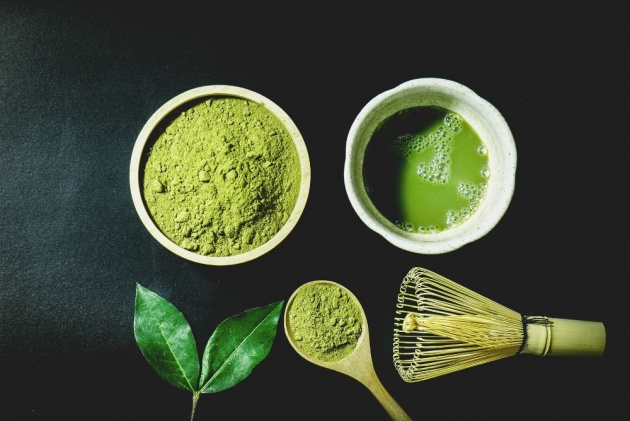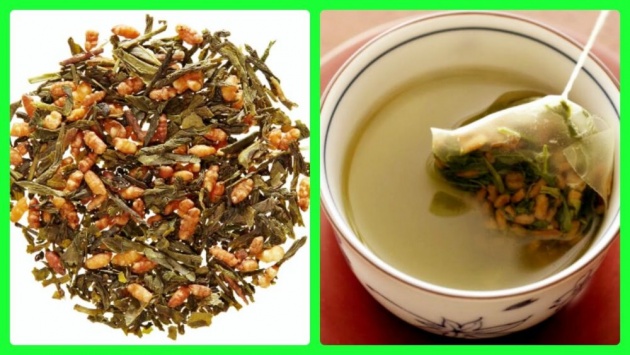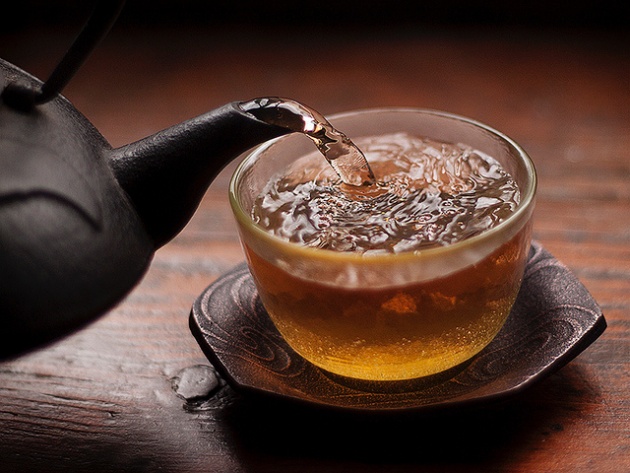
Image Credit: dungthuyvunguyen via Pixabay / Edited with Photoshop
Japanese tea has been around for more than a thousand years. Because of its many health benefits, it has become the beverage of choice among court nobilities and even the samurai class. Tea has been an essential part of the Japanese culture--so much so, that tea ceremony traditions, such as "chanoyu, "chado", and "sado", were formed. However, tea was just reserved for royalty and wealthy families and did not become available to the masses until much much later. When tea became widely available to the general public, new preparation and processing techniques were developed--which is why we now have various types of Japanese green tea. Here are some of the most common ones.
Sencha

Image Credit: https://www.greenvalleyspices.com/
Sencha is the most popular and common variety of tea in Japan. It has a note of delicate sweetness to it coupled with a mild astringency--which is a distinct flavor that sets it apart from the other types of Japanese green tea. Sencha refers to the first picking of the tea leaves which takes place around late February in areas with warm climates and the end of May in cooler locations. Sencha tea has a high content of vitamin C and is especially popular as a teatime drink for women.
There are several factors that affect the final taste of Sencha. The number one factor is, of course, the quality o the tea leaves used. The location of the plantation where the tea leaves where grown also plays an important role, as well as how the leaves were processed.
New varieties of Sencha have emerged in the market in recent times. One such variety is mizudashi-sencha which can be steeped using cold water. This proved a huge success, especially during the summer season. Another product on the market is funmatsucha which is powdered Sencha.
Gyokuro

Image Credit: https://www.maiko.ne.jp/
Gyokuro is a one-of-a-kind tea that is labor-intensive to grow and process. Its high labor costs and low yield make it the most expensive tea in the whole of Japan. Some even consider it as
The emperor of Japanese green teas.
On its final month before getting harvested, it is covered by shade--which is what makes it so unique. But, why cover the tea plant? Tea leaves contain L-Theanine, an amino acid that converts to Catechins when exposed to sunlight. The Catechins are actually what makes low-quality tea taste bitter. When shade is applied to the tea plant, it prevents most of the L-Theanine from converting to Catechins. So, as a result, Gyokuro tea has a uniquely sweet taste to it that is often favored over the sun-grown Sencha tea.
Additionally, L-Theanine is also often referred to as the "feel good" amino acid. It is primarily found in the leaves of the tea plant (Camellia Sinensis) so all teas, in general, contain this amino acid. However, the teas that contain the most L-Theanine are Gyokuro and Matcha tea.
Matcha

Image Credit: dungthuyvunguyen via Pixabay
If gyokuro is the emperor of Japanese green tea, then matcha is the
Empress of health.
Matcha is a type of powdered green tea which is used in formal tea ceremonies in Japan. It is made from the finest tencha tea leaves, a rare type of tea leaves. When buying matcha powder, you should look at its color. There are basically two types of matcha powder: the light green and dark green varieties. The light green ones are sweeter while the darker varieties are more astringent.
As a rule, high-quality matcha powder has a bright green shade.
The tea bush is shaded from sunlight with reed, cloth, or straw a month before harvesting the leaves. The tencha leaves are then steamed and dried--but not rolled. They remain flat while their veins and stems are removed. The stripped tea leaves are then placed in a slow-turning stone mill to be grounded to a fine powder. Just like powdered sencha, matcha also completely dissolves when mixed with water. Although sencha is considered the most popular type of tea in Japan, matcha is slowly gaining popularity around the world because of its many health benefits. And because you ingest the whole tea leaves, you don't miss out on any of the non-water soluble nutrients found in the leaves, such as beta-carotene, vitamin E, and dietary fibers. Additionally, matcha can also be used as an ingredient to other dishes, especially desserts.
Here is an easy recipe for making iced matcha latter fro Sasha Colina.
Video Credit: Sasha Colina via Youtube
Genmaicha

Image Credit: Screencapture from Danica Revamped viaYoutube
Genmaicha, also referred to as the 'Popcorn Tea', is essentially any sencha tea mixed with roasted brown rice. Although it originally started as 'the people's tea' because of its less expensive price tag, it has slowly become a popular choice because of its unique look and nutty flavor.
With the rice, it tastes nutty, with a toasted flavor and a hint of sweetness.
Genmaicha helps cleanse the palate so it's a great choice of beverage after a meal that includes deep-fried or oily foods. When brewing genmaicha, you should boil it in higher water temperature as the rice in this tea releases its flavor at around 85°C.
Hojicha

Image Credit: https://www.theswellelife.com/
When bancha or sencha is roasted over high heat, it produces brownish tea leaves imbued with a savory fragrance called hojicha. The process of making hojicha tea is very unique as it is not steam. Instead, it is pan-fried--which creates its one-of-a-kind flavor and aroma.
Hojicha tea has a nutty, toasty flavor and aroma.
Hojicha tea is most notable for its low caffeine and tannin content, which makes it a good option for older people, those who have low caffeine tolerance, and even children. However, it is advised that you limit the amount of tea given to children as hojicha still contain caffeine even if it's just a little bit.
Final Thoughts
There you have it. The different types of Japanese green tea. Wow! Who would have thought that Japan has so many types of green tea? Mind you. These are just some of the most common ones--so there are still a lot more.
Before you go, you might be interested to see what a traditional Japanese tea ceremony looks like.
Video Credit: Mutual Shoots LTD via Youtube
~~oO0Oo~~oO0Oo~~oO0Oo~~
Thanks for reading! Have a wonderful day ahead of you and keep smiling. :)
Written by Chineyes for bitLanders
For more quality blog posts, you may visit my page
Not yet on bitLanders? Sign up now and be rewarded for sharing ideas, photos, and videos!



